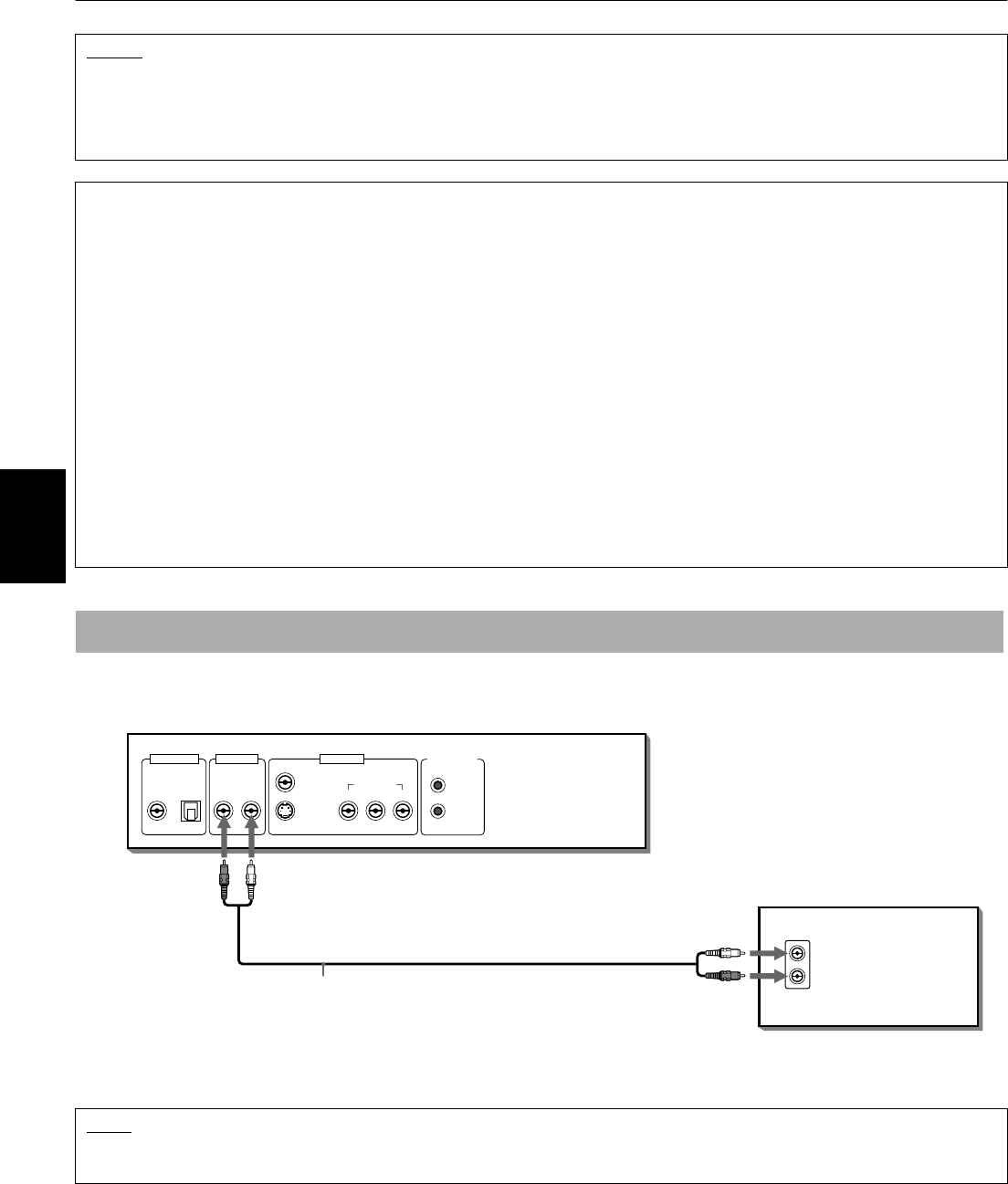
Getting started
18
Getting started
You can enjoy high-quality audio by connecting the unit's audio output to your amplifier or receiver.
• Connect the unit's AUDIO OUT to any line-level inputs (such as AUX, DVD, CD, etc.) of an audio amplifier or receiver.
NOTES
• Connect “Y” to “Y”, “P
B
” to “P
B
”, “P
R
” to “P
R
” correctly.
• When the component video input jacks of the TV is of the BNC type, use an adapter to convert a pin jack to a BNC jack
(optional).
• When the Progressive scan mode is selected, the VIDEO and S-VIDEO outputs do not feed the correct signals.
About SCAN MODE
To display video on the monitor (television) screen, the conventional scanning method is called “Interlaced scan”.
With this method, only half of the horizontal lines are displayed at a time. So two fields complete a single picture
(frame); i.e., the first field, containing all the odd-numbered lines, is displayed followed by the second field, containing
all the even-numbered lines.
On the other hand, the Progressive scan system scans all horizontal lines at a time, so you can double the number of
pictures compared with the interlaced scan, resulting flicker-free, high-density picture.
To enjoy the progressive scanned video, a monitor (or TV or projector) to be connected to the unit must have the
Progressive inputs.
Depending on the material source format, DVD VIDEO discs can be classified into two types; film source and video
source (Note that some DVD VIDEO discs contain both film source and video source). Film sources are recorded as 24-
frame-per-second information, while (NTSC) video sources are recorded as 30-frame-per-second (60-field-per-second
interlaced) information.
When the unit plays back a film source material, uninterlaced progressive output signals are created using the original
information. When a video source material is played back, the unit interleaves lines between the interlaced lines on
each to create the pseudo uninterlaced picture and outputs as the progressive signal.
To connect to an audio amplifier or receiver
NOTE
• When using the unit with a stereo amplifier or receiver, make the “DOWN MIX” setting in “PREFERENCE 2” to “Lo/Ro”. (See
page 52.)
AUDIO
RIGHT
LEFT
IN
The unit
DIGITAL OUT VIDEO OUT
AV COMPU LINK
AUDIO OUT
RIGHT
COMPONENT
S-VIDEO
VIDEO
YP
B
P
R
PCM / STREAM
COAXIAL OPTICAL LEFT
Audio cable
(not supplied)
White
Red
White
Red
Amplifier or receiver
)(1*ERRN3DJH7KXUVGD\-XO\$0


















